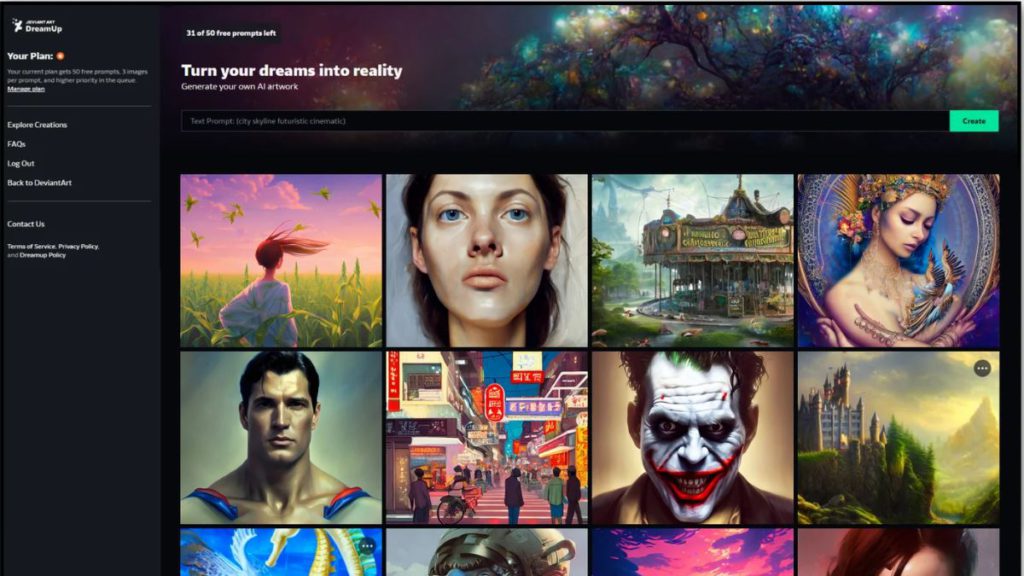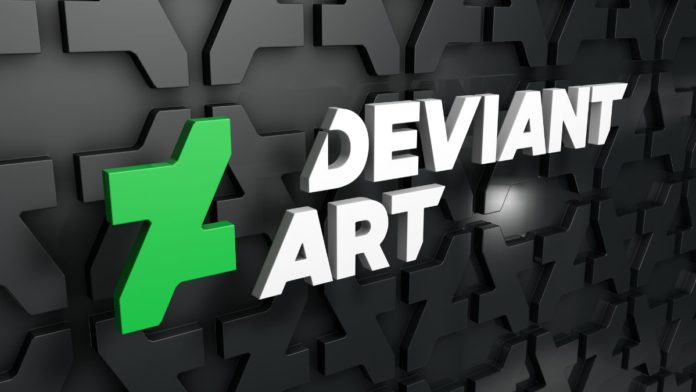Jumping on the bandwagon, the Wix-owned artist network DeviantArt unveiled DreamUp, its own AI art generator, promising a “safe and fair” generation for creators. Images produced by DreamUp will have a noticeable watermark and be automatically tagged on DeviantArt with the hashtag “#AIart.”
Based on the Stable Diffusion AI model, the new generator will explicitly label their images as AI and even give credit to the authors who contributed to them when they are posted on the DeviantArt website. Additionally, the website offers creators the option to decide whether the tool can use their work as direct inspiration in an effort to allay artists’ concerns that their work would be copied or used by the generator to create images in their style.
On top of that, the website gives creators the authority to decide whether or not to allow their work to be included in datasets used to train third-party AI models. If they select not to be included in such datasets, a “noimageai” metatag directive will be present in the HTML files of their content pages. Further, a “noai” directive protects their artwork when media files are directly downloaded from DeviantArt’s servers.

Since there are now tens of thousands of photos on DeviantArt’s website that have been labeled as “AI-art,” according to CEO Moti Levy, this is necessary. The number of those photographs published to their website has increased by 1,000% in the previous four months alone.
Levy did not clarify whether DreamUp, like DALL-E 2 and most other commercial AI art tools, will automatically filter out subjectively undesirable content such as graphic violence and gore. Though, he pointed out that DreamUp’s artwork will be subject to DeviantArt’s terms of use and etiquette guidelines, which forbid deepfakes, hostile images, and explicit art.
DreamUp will be available this week as part of DeviantArt’s premium Core plans, which start at US$3.95 per month. Members of DeviantArt may try out the tool for free with up to five prompts.
Read More: Canva unveils text-to-image AI feature
Meanwhile, the move to introduce DreamUp backfired immediately, with DeviantArt facing immense backlash from users because to opt out, users had to submit a form that would take days to process. The present edition of Stable Diffusion was not trained on this exclusion, which means that while DeviantArt users’ past artwork may have been included for training this iteration of the algorithm, their style will no longer be used as a differentiator even if they opt-out.
Another glaring instance for backlash was when users had to manually go into their accounts and opt out of every single image since every single work of art on the whole website had been identified to be made accessible for AI systems to learn from. It released an update that continues to focus mostly on responding to user complaints, which would imply there are fundamental problems with the exercise’s whole purpose rather than simply specific instances of how it was implemented.
There isn’t much that can be done to prevent companies from continuing to use user art from DeviantArt for their own works in the absence of any agreements with them or legally binding copyright laws that protect artists’ works. Levi claimed that DeviantArt has begun contacting other companies in an effort to forge some form of agreement. Levy also believes that simultaneously, other image hosting services need to start negotiating similar agreements with their artists if they are serious about placing leverage on companies developing new AI art generators.


